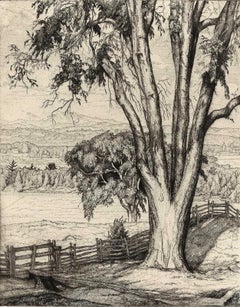Luigi Lucioni On Sale
Recent Sales
Big Elm
By Luigi Lucioni
Located in New Orleans, LA
Luigi Lucioni (November 4, 1900 – July 22, 1988) was an Italian-born American painter. He lived and worked mainly in New York City, but also spent time working in Vermont. His still ...
Category
1930s American Realist Landscape Prints
Materials
Etching
Portrait of Abraham Lincoln
By Luigi Lucioni
Located in New York, NY
Rare dry-point Etching by Luigi Lucioni; signed "Louis" Lucioni as the artist signed his very earliest prints. Pencil signature bottom right. Copyright and published by Charles Barmo...
Category
1920s Realist Portrait Prints
Materials
Etching
My Birthplace.
By Luigi Lucioni
Located in Storrs, CT
My Birthplace. 1939. Etching. Embury 63. 8 7/8 x 6 7/8 (sheet 13 x 11 1/4). Edition 178 for Associated American Artists. A fine impression in pristine condition, printed with plate t...
Category
1930s American Modern Landscape Prints
Materials
Etching
Get Updated with New Arrivals
Save "Luigi Lucioni On Sale", and we’ll notify you when there are new listings in this category.
